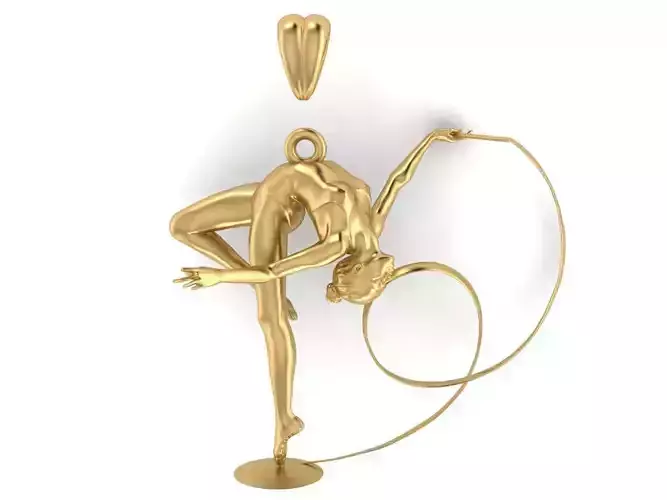1/23
pendant dimensions: X = , y = 53.3, z=11.5 mm
gem size : 1 _ 1.1 _ 1.2 _ 1.3 _ 1.4 _ 1.5 mm round gem, 5.8 * 3.9 pear gem .15.3 * 12.9 oval gem
File format: stl,3ds ,3dm,fbx,obj,skp
pendant weight: gold 18ky:7 gr, silver : 4.7 gr
If you want to reduce the dimensions of the model, I will be happy to help you
STL file has been fixed and ready for the print -STL File has been checked Software -No any bugs during printing
The 3dm file is not suitable for printing and I just provided it for you to make changes. And I can help you if needed, but the rest of the files are ready to print
If you need to make little changes to this model I'll do it for you no extra charge.
If you have any questions I will be happy to answer them -If you are satisfied with the model, thank you for rating it
History of ballet
Ballet is a formalized form of dance with its origins in the Italian Renaissance courts of 15th and 16th centuries. Ballet spread from Italy to France with the help of Catherine de' Medici, where ballet developed even further under her aristocratic influence. An early example of Catherine's development of ballet is through 'Le Paradis d' Amour', a piece of work presented at her daughter's wedding, Marguerite de Valois to Henry of Navarre. Aristocratic money was responsible for the initial stages of development in 'court ballet', as it was royal money that dictated the ideas, literature and music used in ballets that were created to primarily entertain the aristocrats of the time. The first formal 'court ballet' ever recognized was staged in 1573, 'Ballet des Polonais'. In true form of royal entertainment, 'Ballet des Polonais' was commissioned by Catherine de' Medici to honor the Polish ambassadors who were visiting Paris upon the accession of Henry of Anjou to the throne of Poland. In 1581, Catherine de' Medici commissioned another court ballet, Ballet Comique de la Reine, however it was her compatriot, Balthasar de Beaujoyeulx, who organized the ballet. Catherine de' Medici and Balthasar de Beaujoyeulx were responsible for presenting the first court ballet ever to apply the principles of Baif's Academie, by integrating poetry, dance, music and set design to convey a unified dramatic storyline. Moreover, the early organization and development of 'court ballet' was funded by, influenced by and produced by the aristocrats of the time, fulfilling both their personal entertainment and political propaganda needs.
REVIEWS & COMMENTS
accuracy, and usability.























